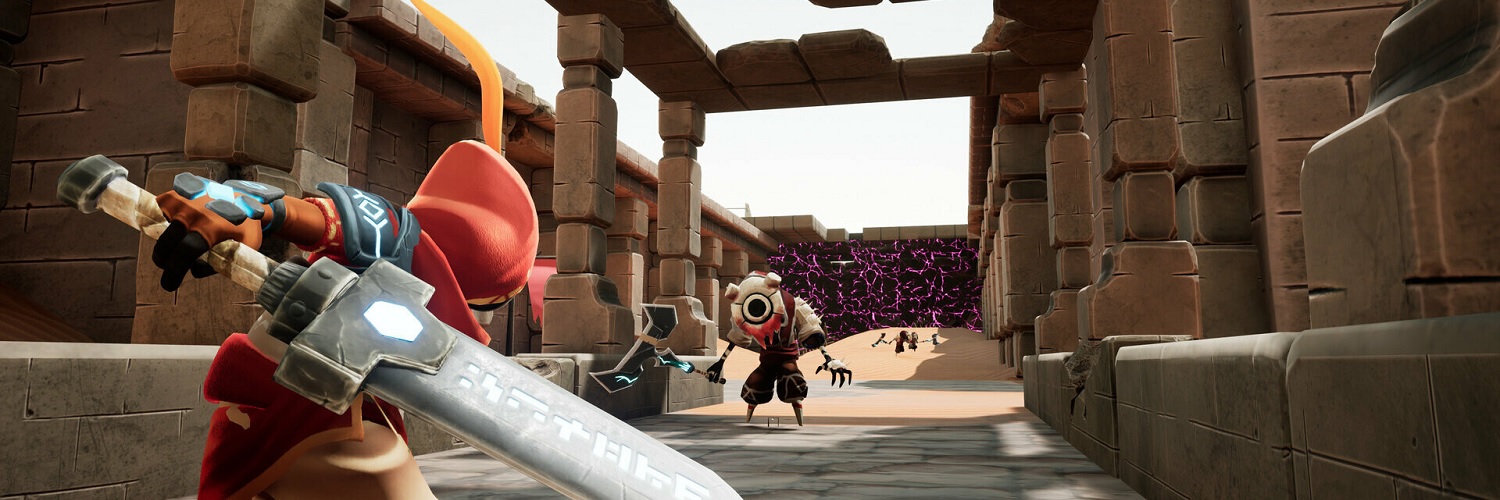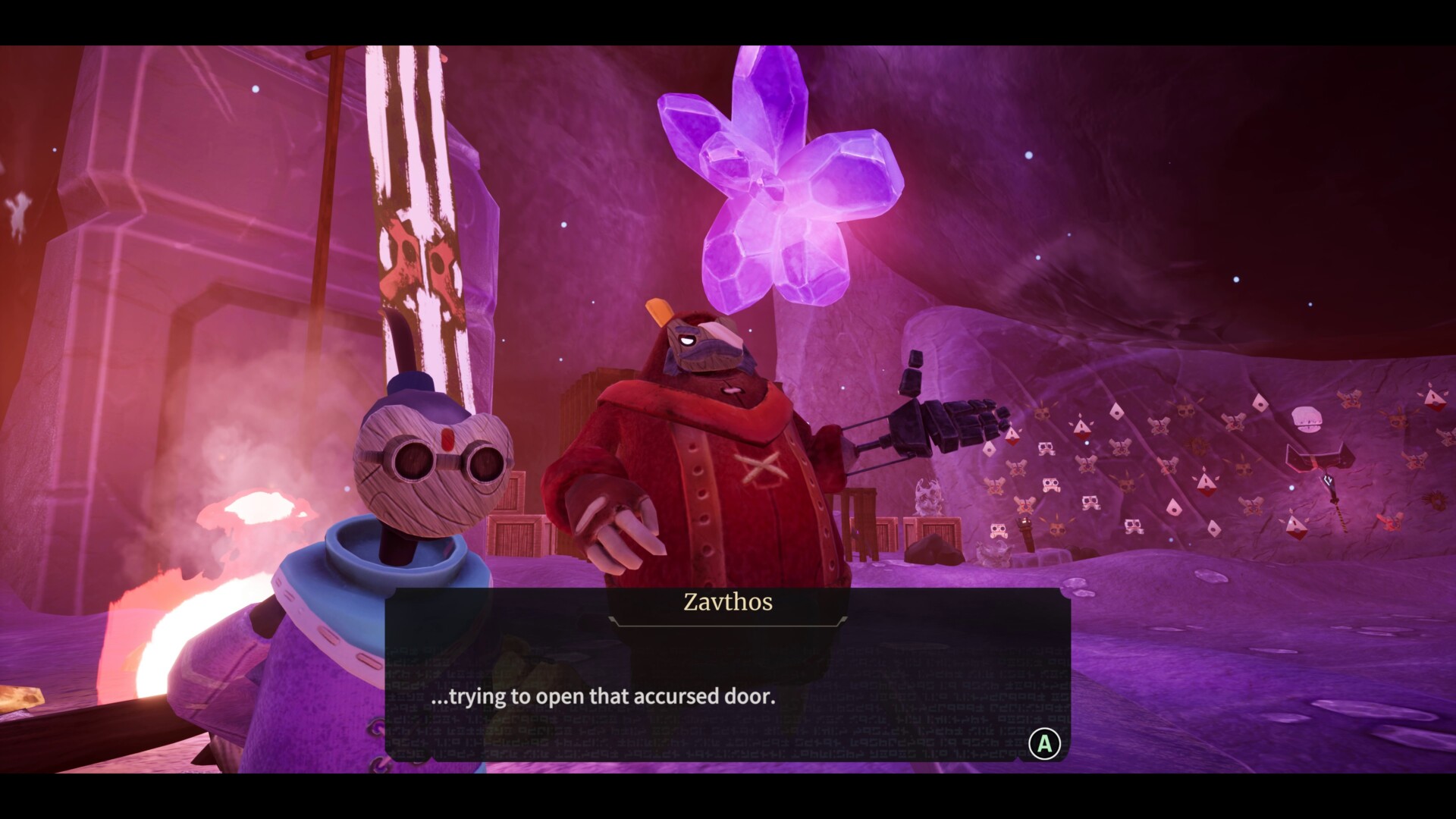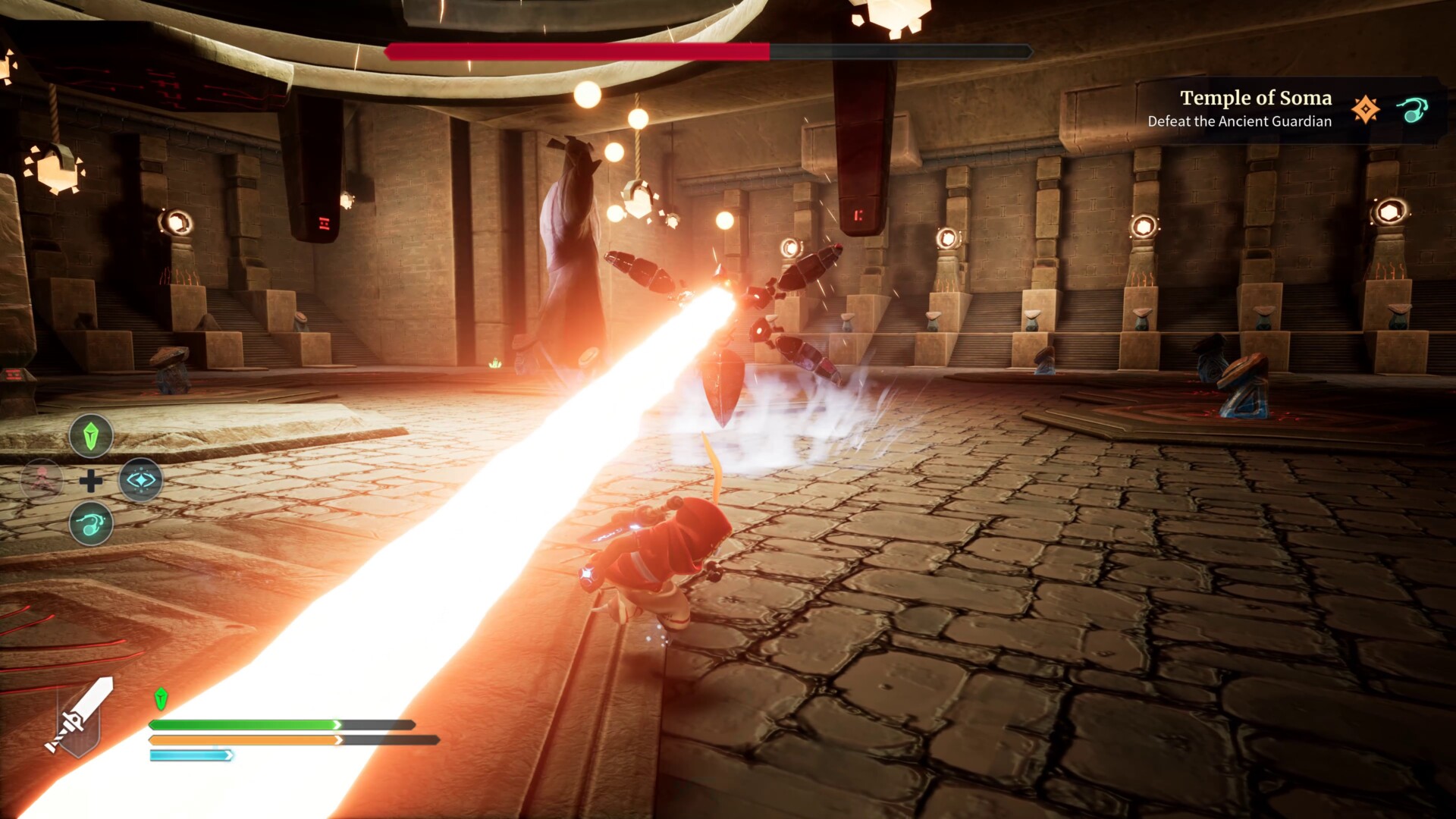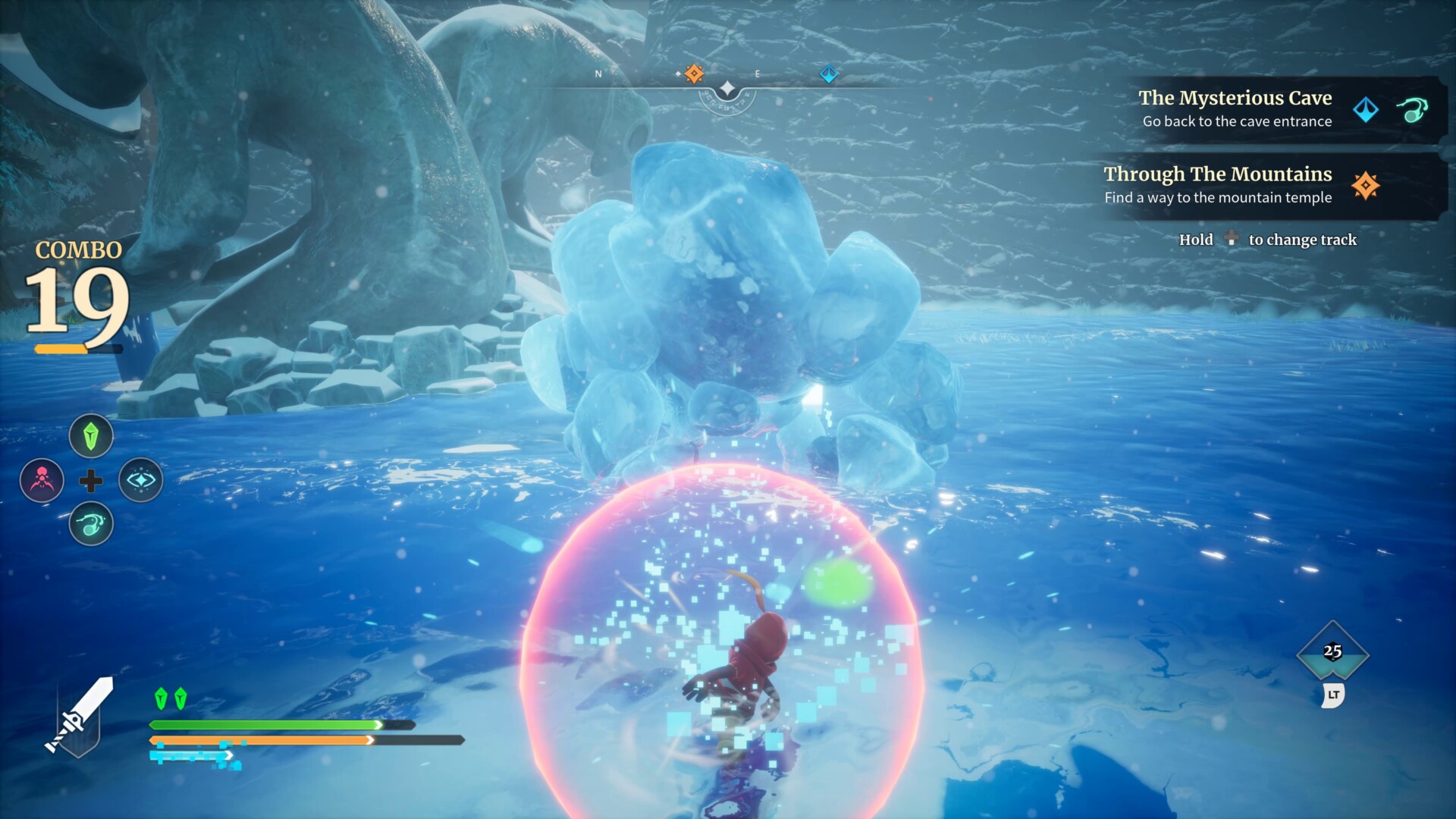
Astor: Blade of the Monolith PC Review
This year has undoubtedly been a challenging period for the gaming industry, as major studios are desperately searching for ways to entice players to spend money through various consumer-unfriendly practices. These practices include offering exclusive missions in high-tier preorders, charging extra for early access, and encouraging players to invest in microtransactions and live service games. However, these studios are often left bewildered when their attempts fail spectacularly, leaving them unable to cover the exorbitant costs associated with game development.
On the flip side, the smaller publishers/indie scene offers a refreshing alternative. It acts as a platform for experimentation within the gaming medium. While these developers/publishers face their own set of unique challenges, such as gaining recognition, they can take risks in terms of gameplay, blending genres, visuals, or simply creating a game that provides a comfortable and enjoyable experience without constantly pressuring players to spend additional money. Astor: Blade of the Monolith is a prime example of a smaller title that may not be the epitome of action RPGs but possesses distinct charm. Sometimes just being a bit of fun is all it takes to be entertained.

The story of Astor: Blade of the Monolith is set on the planet Gliese, which was once home to a thriving civilization that has long since vanished. The Diokek, an intelligent race created by this ancient civilization, lived in peace on the planet until a mysterious group called the Hiltsik began hunting them down. The origins of the new threat remain unclear to the Diokek. At the start of the game’s adventure, the protagonist Astor becomes the chosen wielder of a blade fused with special abilities, which enables him to embark on a journey across the lands of Gliese to uncover the answers to his questions – who were these creators of Diokek and where did they go? Can Astor find a way to help the Diokek survive the threat of the Hiltsik?
Astor is a silent protagonist, with the chirps of other Diokek making up the sounds for the dialogue on screen by the supporting cast. As a silent hero with a mask, the designers have had to make Astor animated during cutscenes, so the player can tell the feelings of the hero through his body language. Not all characters get this and sometimes the delivery of the cutscenes can feel flat due to the lack of emotion, which is down to the masked characters featured in the game’s overall story. A narrator also provides commentary as Astor explores the lands of Gliese, reminiscent of games like Biomutant and Bastion, though those featured more in-depth dialogue rather than the brief descriptions in Astor: Blade of the Monolith. The game’s story is primarily conveyed through concise narrative beats, particularly when exploring the game’s temple/dungeon environments. As the story progresses towards the end, the plot becomes more prominent, in contrast to the early exploration of the game’s small open areas. While the Diokek characters and their creators add a distinct element to the game, much of the narrative feels familiar and may not leave a lasting impression.

Astor: Blade of the Monolith delivers a nostalgic journey reminiscent of the PlayStation 2 era with its gameplay and design. The game’s stiff animations and old-school user interface with hack-and-slash combat evoke a classic feel that transports players back to a time when game development was simpler. Despite these retro elements, the game captures the spirit of indie, drawing inspiration from past eras to create a fun experience.
The world of Gliese is segmented into diverse biomes, each presenting its own set of quests for Astor to tackle. Unlike games with seamlessly connected worlds, Astor: Blade of the Monolith utilizes disjointed maps that require teleportation between zones, making the game feel more like an action game than a traditional adventure or action RPG. What I found amusing is that in the menu is a “map” but all that entails is a picture of the area with a collection stat to inform what secrets have been found; funny but a worthless element as a map would have been a welcome feature when exploring for secrets, which the game contains a fair amount to collect. Among these zones, locations like Lyceum, with its ancient hidden building that escalates into the clouds and contains floating rocks and simple light beam puzzles, are particularly memorable, while others, though familiar, such as the sunny red desert or the red grassy forest hills or the blue hue of the forest and lake still feature visual flair that imbues the game with personality.

But staying on the topic of classic game design, a lot of the biomes in Astor: Blade of the Monolith have invisible walls that disrupt the overall experience of exploring these lands when they block what does visually look like a route that can be taken. There are climbing sections that are painfully slow to explore and again can lead to getting stuck on what looks perfectly fine only to have the game block movement for some unknown reason. These segments feel devoid of challenge or reward, making them seem like fillers rather than engaging gameplay elements. Without the tension of a stamina meter, the thrill of a stunning view, or the pressure of impending danger, these climbing sections miss an opportunity to do something exciting and instead, we have to deal with a mundane action that has a habit of frustrating. This along with the lack of a map worked against me in wanting to explore for secrets, as I was not sure if I had travelled down that location before and so was invested in simply following the main quest or side quest trackers, which can be followed with a composer direction at the top of the screen or pressing a button to watch some fireflies highlight the path like a satnav.
Side quests tend to lack excitement as they usually revolve around mundane activities like searching for items, locating characters, or engaging in battles against enemies. These quests lack originality and narrative depth, serving primarily to earn experience points and rewards. There are challenge portals that offer the chance to acquire new abilities or increase stats by engaging in arena battles against existing bosses or waves of enemies, appealing to those who enjoy combat, as they offer the more exciting fights bar the boss fights. Equally, main quests face a similar issue, but their integration into the story and the opportunity to explore new locations or dungeons make them more compelling than the supplementary side quests. This is down to The Legend of Zelda style dungeons, but the puzzles and challenges inside them are certainly more on the easier scale, “Zelda Dungeons for Dummies” is an accurate description.

Combat is straightforward and lacks complexity. It closely resembles combat mechanics found in older action RPGs, featuring simple and concise combat sequences that do not allow for much creativity. Unlike character-specialized combat seen in games like Devil May Cry , the combat here is more generic. Players can execute basic combos by combining light and heavy attacks, as well as utilising blocking and rolling. Well-timed blocks can stun enemies, providing an opportunity for free hits. Additionally, Astor can harness runic powers that are unlocked by discovering shards and purchasing them with red experience orbs. These runic abilities serve as combo finishers, dealing extra damage at the cost of depleting the runic bar. As the game progresses, Astor gains the ability to empower himself with the runic bar acting as a timer. When activated, Astor glows and every hit becomes a critical one. Furthermore, players can acquire additional weapons, such as fists or the spear, which is a favourite of mine as it is particularly effective for striking multiple enemies as Astor gracefully spins it like a skilled martial artist. Astor can also summon friendly AI allies or unleash devastating area-of-effect attacks by assigning up to four runic abilities to quick buttons.
The combat in Astor: Blade of the Monolith could greatly benefit from some improvements. Certain aspects feel awkward or buggy. Additionally, the camera’s lock-on feature is not helpful as it often pushes through walls and fails to adjust accordingly, resulting in the player only seeing brick textures while trying to fight enemies. Furthermore, there is a noticeable delay in input response, which could be attributed to animation priority or simply the game not reacting quickly enough to button input. The roll mechanic does not seem to suffer from this issue. Jumping is also stiff, making it hard to predict where Astor might land, more so with the sprinting ability that pushes Astor further forward on jumping. There is minimal input to correct a bad jump, which did lead me to fall off some platforms or land into instant death water, as Astor cannot swim.

Another problem is that combat quickly loses excitement due to the lack of new enemy introductions. Throughout the 11-hour adventure, the same enemies repeatedly appear without any threatening special attacks or blocking abilities, only relying on basic attacks. Regarding the length of Astor: Blade of the Monolith, the Steam page advertises close to 20 hours, but due to the absence of a map, I did not feel inclined to search for all the collectables in the game. Instead, I was happy to focus on completing side quests and progressing through the main story.
Regarding visuals, Astor: Blade of the Monolith runs well and delivers visually appealing graphics. This is to be expected with low demanding requirements mentioned on Steam (GTX 1060 for recommended) running on a high-end PC. The game can produce some wonderful vistas, thanks to the vibrant and artistic, colourful environments. While not strictly cel-shaded, it incorporates a cartoonish visual style that stands out due to its blend of oversaturated colours. However, on the negative side are occasional camera clipping and bugs. At one point, I found myself trapped between an invisible wall and a snowy rock, preventing movement and causing Astor to repeatedly fall in animation while my attempts to jump out were futile. Fortunately, a quick reload resolved the issue, and the game’s frequent autosave feature ensures the impact of such issues is to a minimum, which is a definite plus.

Astor: Blade of the Monolith has a certain charm and fun element to it, but the game’s simplistic combat and repetitive foes take away from the overall excitement. I would like there to be more reasons to use powers against foes, but the variety of enemies is not big enough to support this. Although it provides enjoyable moments, vibrant visuals, and an intriguing setting, it falls short of being truly remarkable or memorable, yet there is a game that can be enjoyed even if it does not leave a lasting impression.
